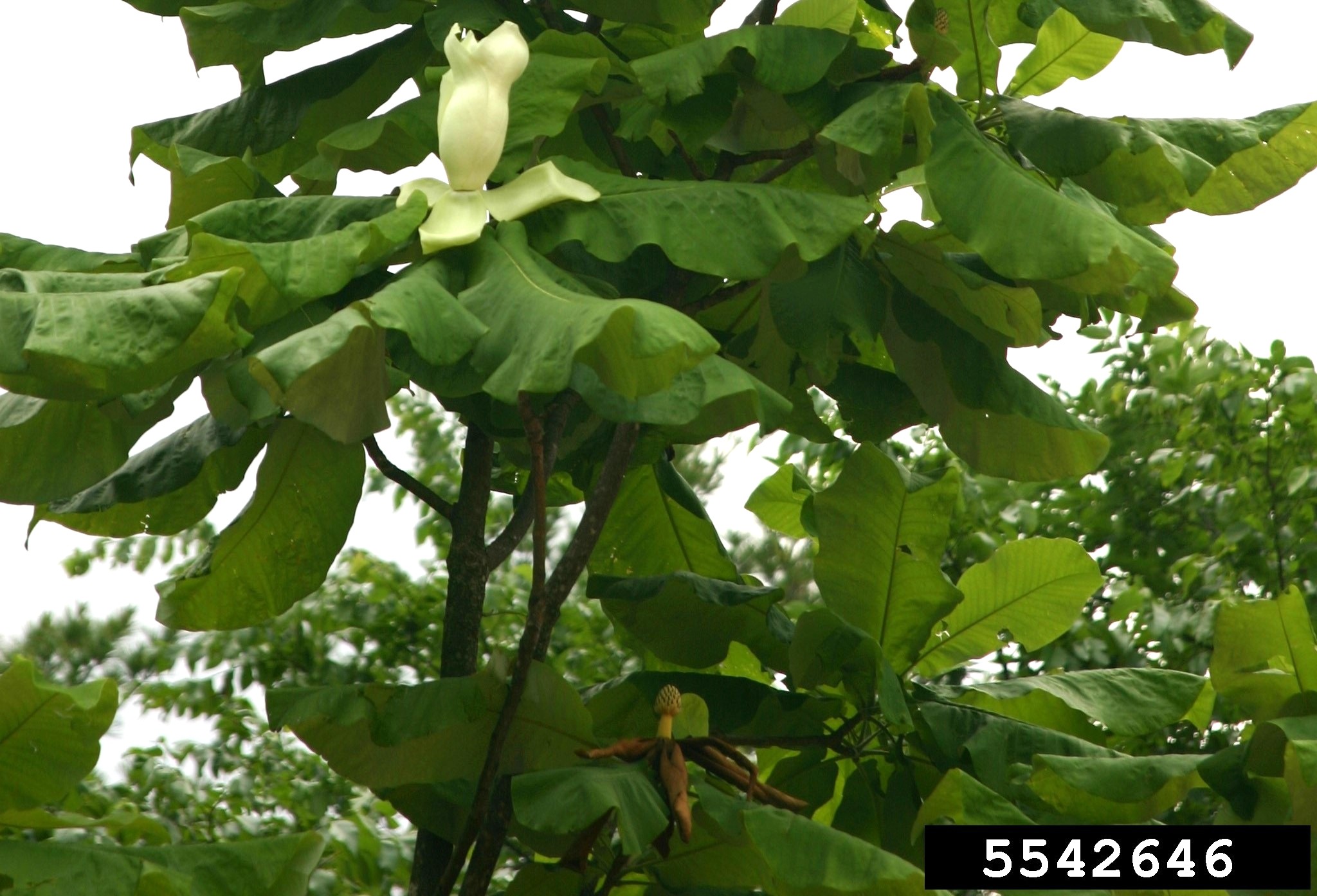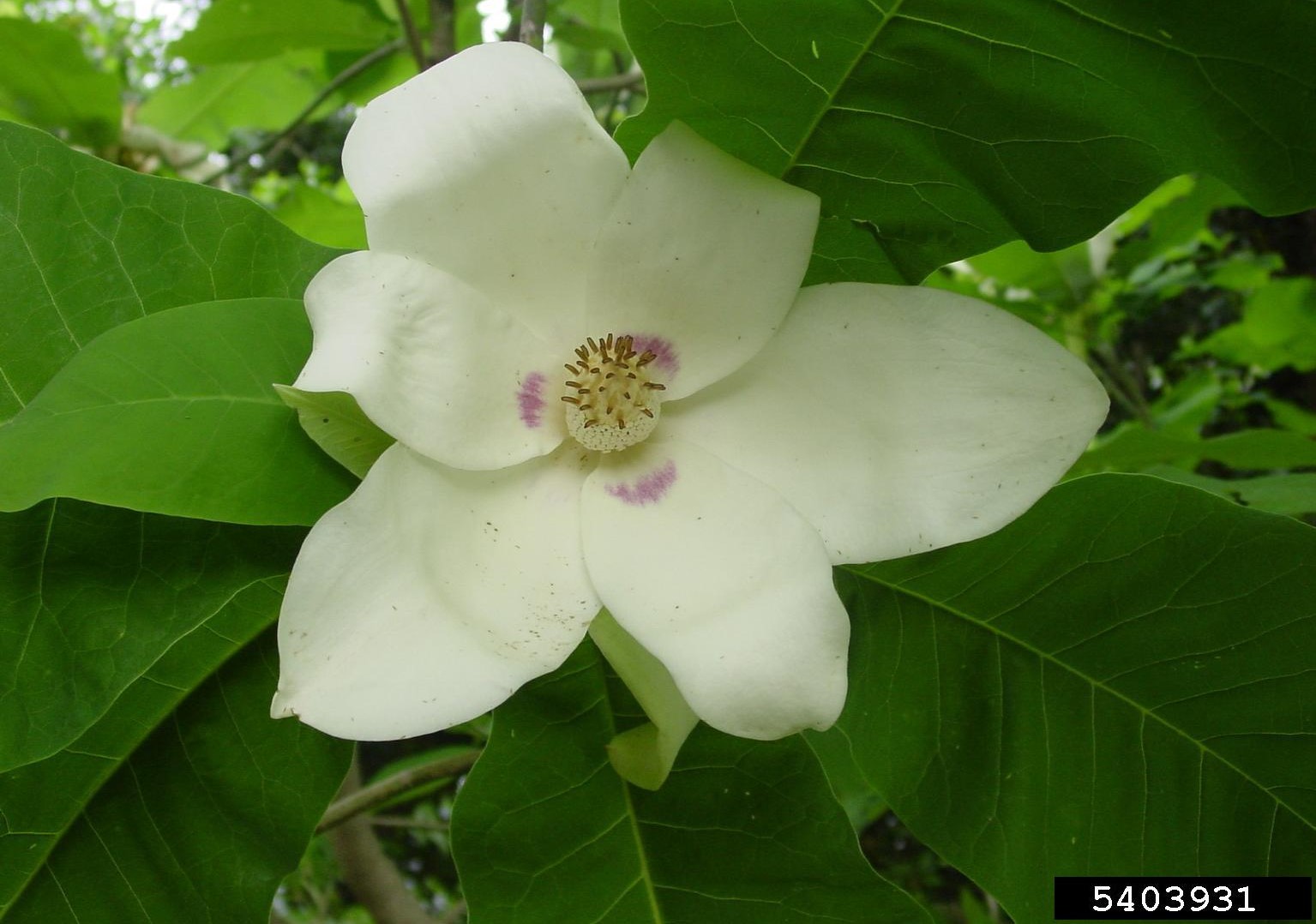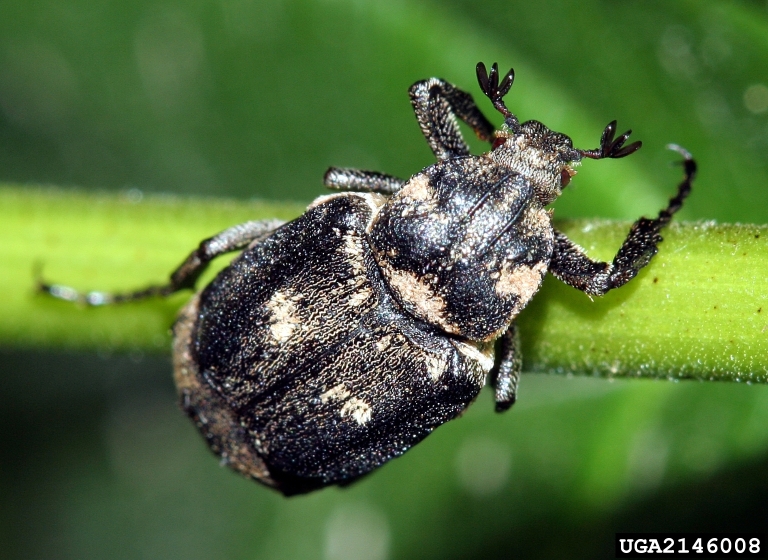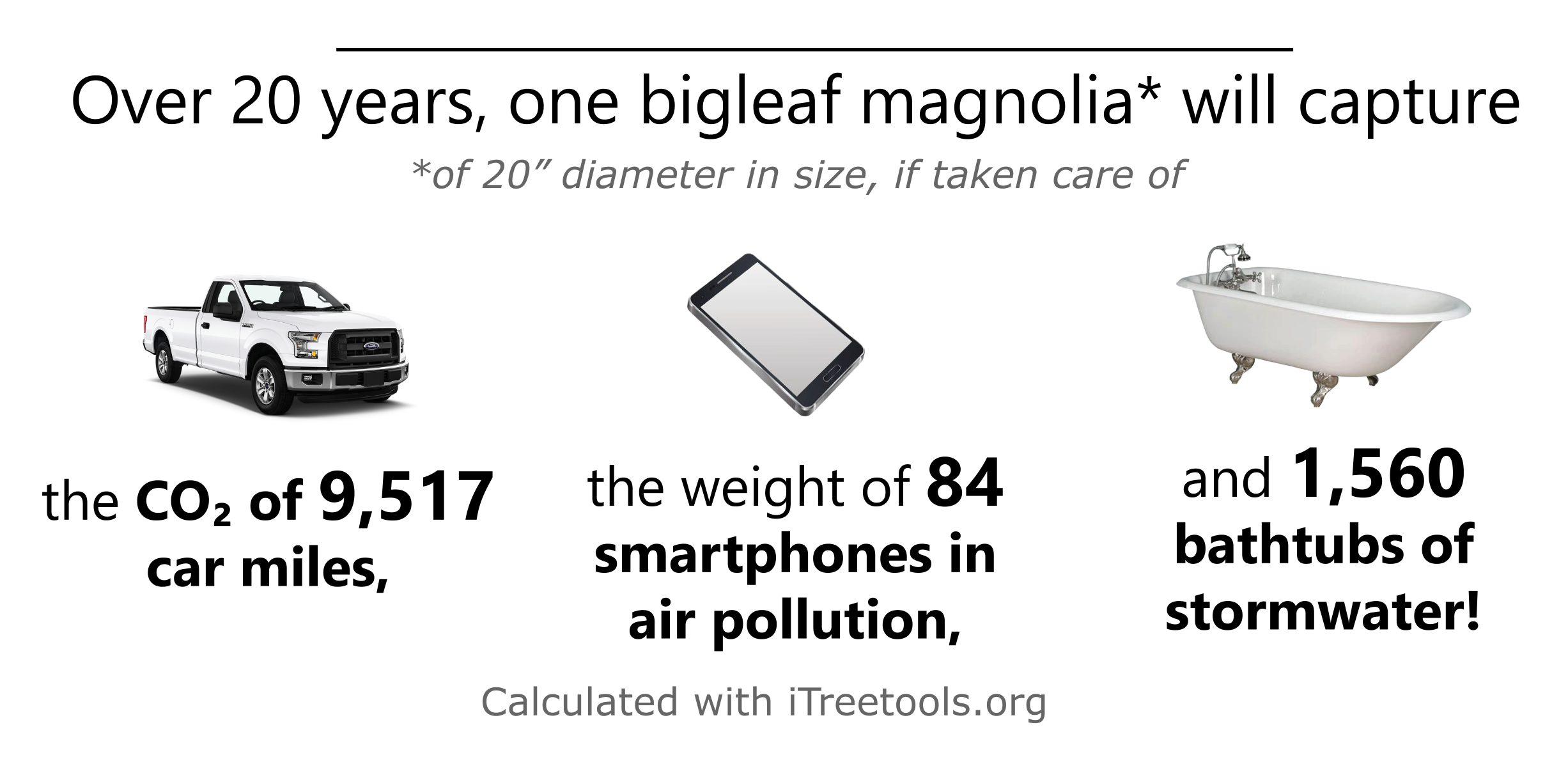Tree Highlight: Bigleaf magnolia
Bigleaf magnolia
Magnolia macrophylla (Family Magnoliaceae)
Bigleaf magnolia leaves, the largest of any North American tree, and its white flower
The basics
The bigleaf magnolia (Magnolia macrophylla) is a deciduous tree found occasionally in rich wooded areas in river valleys and ravines in the eastern U.S. It grows up to 40 feet tall, with huge leaves that grow to be 3 feet long and 2 feet wide. Bigleaf magnolia blooms from May to July with beautiful white flowers up to 14 inches wide. Fruits are 2.5 to 3-inch egg-shaped cones that are green at first, then reddish, and open to show many bright orange/red seeds when ripe.
Did you know?
- Bigleaf magnolia has the largest leaves and flowers of any native North American tree!
- Bigleaf magnolia could be confused with the umbrella magnolia (M. tripetala). Learn how to distinguish the two species here.
- The flowers are pollinated by beetles (not by bees!) during the night. The purple markings on the inside of the flowers help beetles find their way.
The elongated, large buds are covered by fine hair that gives them a silvery appearance and make the big leaf magnolia easily recognizable, even in winter.
The large white flower of the bigleaf magnolia
Scarab beetles pollinate the flowers of the bigleaf magnolia
Wildlife
- Hummingbirds feed on the nectar, and thrushes, cedar waxwings and mockingbirds eat the fruits.
- Unlike most trees, the flowers of bigleaf magnolia trees are pollinated primarily by beetles, which feed on the nutritious pollen.
Uses
- The Cherokee people used the inner bark of the bigleaf magnolia as an analgesic for toothaches and upset stomachs.
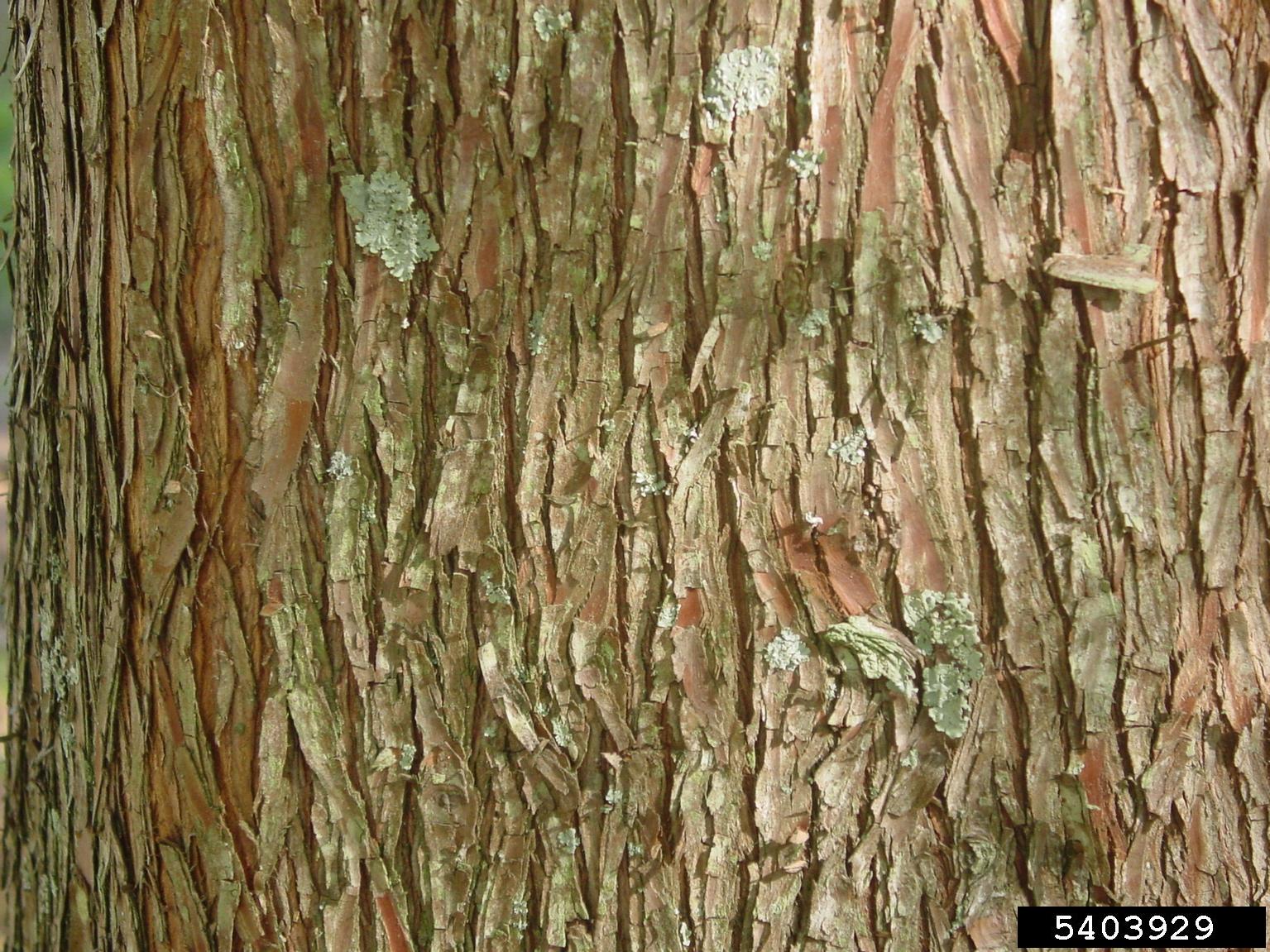
Bark of the bigleaf bigleaf magnolia
Benefits
- Over a 20-year period, a healthy bigleaf magnolia with a diameter of 20 inches will offset 9,517 car miles worth of CO2, absorb enough stormwater to fill 1,560 bathtubs, and remove an amount of pollution from the air –in gaseous and particulate form – equivalent in weight to 84 smartphones! Learn more at: https://mytree.itreetools.org/
Magnolia Tree of the Week video
By University of Kentucky Forestry and Natural Resources Extension.
Click to watchContact us: ufi@uky.edu
Images sourced from forestyimages.org
